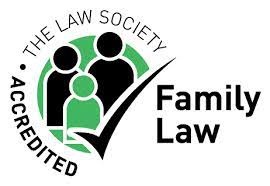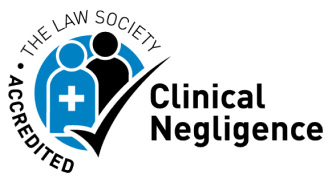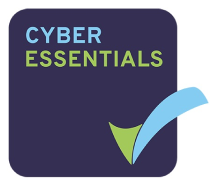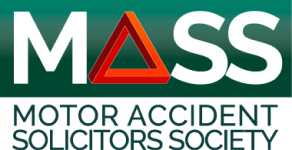Through our work acting for clients in clinical negligence and personal injury cases, we often see the devastating impact that spinal injuries have on people’s lives. At the end of this article we will briefly touch upon the types of claim we deal with and highlight the importance of bringing claims where avoidable injury has occurred.
A spinal cord injury occurs from damage that has been caused to the spinal cord and can occur at any level of the spine. In addition, a spinal cord injury can also include damage to the cauda equina which is a group of nerves and nerve roots at the end of the spinal cord, typically at levels L1-L5. Spinal cord injuries are often abbreviated to SCI. These injuries are life changing and the effect on the person affected will depend largely upon the type and level of the injury.
Complete and incomplete spinal cord injuries
A complete spinal cord injury occurs when due to damage, there is no longer any nerve communication below the injury site. The effect of a complete spinal cord injury is a complete lack of muscle control, feeling or function below the site at which the cord has been damaged and any link between the nervous system and the brain is broken. Therefore, the higher up on the spinal cord that the injury occurs, the more severe the damage and loss of function and feeling.
An incomplete spinal cord injury results in some messages being able to be sent to and from the brain and therefore some function and feeling remains below the injury site.
Traumatic and non-traumatic injury
Injuries can be of two modes: traumatic and non-traumatic. A traumatic injury is the result of a sudden and violent blow to the spine that fractures or dislocates vertebrae. This can be caused by a car accident, a gunshot, a fall, or any number of other incidents.
Non-traumatic injuries can result from arthritis, cancer, inflammation, infections, or disk degeneration of the spine. These types of injuries are usually the result of a disease.
Life expectancy following spinal cord injury
The life expectancy for someone with a spinal cord injury can be either a normal life span or slightly shortened. This will depend on the severity of the injury and level of care given. Death is normally not the result of the actual damage to the spinal cord; it is usually caused by secondary complications such as diseases, infections, or accidents that result from the body’s compromised abilities. Spinal cord injuries affect the body in many systems other than motor skills.
The loss of sensation is a complex issue because it usually means that you have lost function. The sensation from brain to body travels to and from the body. It is the connection from the sensory receptors via the spinal cord to the brain where we become aware of a stimulus and generate a response. If the pathway is disrupted, then the brain will not receive the correct message from the body. Sensory input and the initiation of motion occur continuously, so whenever the scenario you may be aware of, say an itch or an object in your skin, your body will initiate a response even if it’s just a reflex. Failure to recognize or respond to stimuli can result in pressure sores, pain, and limitation of muscle and joint activities. If there is no motor/sensory function below the level of injury, it is described as complete loss of function. High-level injuries result in an inability to cough or breathe independently. This can result in chest infection or not being able to clear secretions from the chest, which is a very dangerous scenario.
Causes and risk factors
Avoidable spinal injuries
Spinal cord injuries are caused by damage to the vertebrae, ligaments, or disks of the spinal column or to the spinal cord itself. Sometimes, injury is caused by a sudden, traumatic blow to the spine, but in most cases, spinal cord injury is the result of gradual damage. In the UK, almost half of SCIs caused each year are caused by road traffic collisions or accidents, most often car or motorcycle accidents.
Industrial accidents, i.e. accidents at work, especially those associated with construction and heights, account for 1 in 5 of all spinal cord injuries. Falls are the cause of over a third of spinal cord injuries and are the leading cause of injury over the age of 45.
Recreational sporting injuries are responsible for approximately 10% of spinal cord injuries and can be caused by acute trauma (e.g., impact from a football tackle) or gradual damage (e.g., repetitive motion in golf or rowing). Finally, diseases can also cause damage to the spinal cord. Electricity related accidents and violence (especially involving knife and gunshot wounds) are also known to cause spinal cord injuries. All of these injuries are caused exclusively by external factors. However, there are also a number of non-traumatic spinal injuries caused by internal medical conditions such as cancer, arthritis, infections, and degenerative disk disease.
Treatment and rehabilitation options
Acute medical management of spinal cord injury follows precise clinical guidelines, and an admission to a specialist unit following emergency admission to hospital. The first few days after injury, when spinal shock resolves, neurological function is reassessed and can often be a period of great turmoil for the patient and their family. During this period, patients often find that the sudden loss of a previously taken-for-granted freedom of mobility and continence can lead to feelings of hopelessness and severe depression. Great emphasis must be placed on provision of psychological support, and various studies have demonstrated that early intervention in this respect can lead to a greater degree of progress in rehabilitation and a more positive attitude. At this point, treatment of bowel and bladder dysfunction should also be aggressively pursued, in the hope of improving long-term renal prognosis.
Early transfer to a specialist spinal injuries unit
Early transfer to a specialist spinal injuries unit has been shown to improve survival in individuals with catastrophic injuries. Treatment in these units is both extensive and expensive, and patients are often transferred large distances to ensure placement in the most appropriate facility.
There are four spinal injury units in the UK: Southport, Oswestry, Stoke Mandeville, and Glasgow. These units generally care for patients with traumatic spinal cord injuries, but also patients with other spinal conditions such as tumours and infections.
The care of patients with acute traumatic injuries is generally on a one to two-year pathway governed by detailed clinical guidelines produced by the British Society of Rehabilitation Medicine. These guidelines advocate a multidisciplinary team approach to management, early tracheostomy and weaning from ventilation in appropriate cases, the prevention of secondary complications including pressure sores, and management of spasticity with the long-term goal of every patient achieving the best possible level of functional independence. Early surgery to decompress the spinal cord is also advocated where clinically possible.
Support and resources for individuals with spinal cord injuries
Both patient and family need a thorough understanding of the medical, functional, and social issues surrounding the spinal cord injury and what expectations can be in terms of achieving the most independent lifestyle. Understanding the injury and future expectations will help a patient and family make a smooth transition to life at home and in the community.
Patient and family education
Patient/family education can occur in a variety of settings, from the initial hospitalization to rehabilitation and outpatient services. The Spinal Injury Association has free booklets on many topics regarding spinal cord injury. Their website will also provide information for the public on neurological disorders and daily neuroscience for recovery of cognitive and motor abilities.
Upon initial injury, patients and family members may feel confused and anxious. It is important to realize that healthcare is a partnership between the patient and healthcare provider. There are many new changes in healthcare services and new information regarding spinal cord injuries. Healthcare providers and patients/family members must stay informed to provide safe and effective care and achieve optimal recovery.
Regardless of the level of injury, individuals will be facing a variety of needs and challenges. It is crucial that newly injured patients be informed of the many issues and resources pertaining to their particular injury. One must be able to identify their medical, rehabilitation, and lifelong needs in order to lead a full and productive life.
People we have helped
We have helped numerous people affected by spinal cord injury including those with Cauda Equina Syndrome. Read about some of the people we have helped here.
How we can help you
If you or a member of your family have been affected by spinal injuries following an accident or medical negligence, Oliver & Co Solicitors can help and happy to have a no obligation free discussion with you about the prospects of successfully pursuing a claim. Our experienced serious injury team is here to assist.













